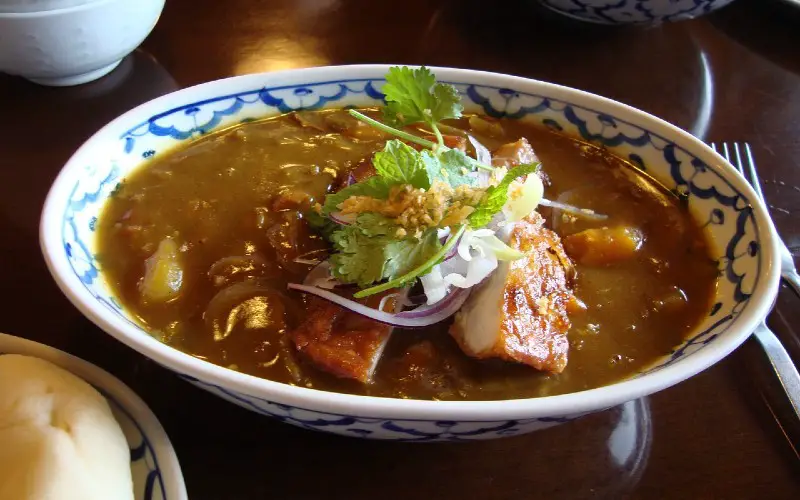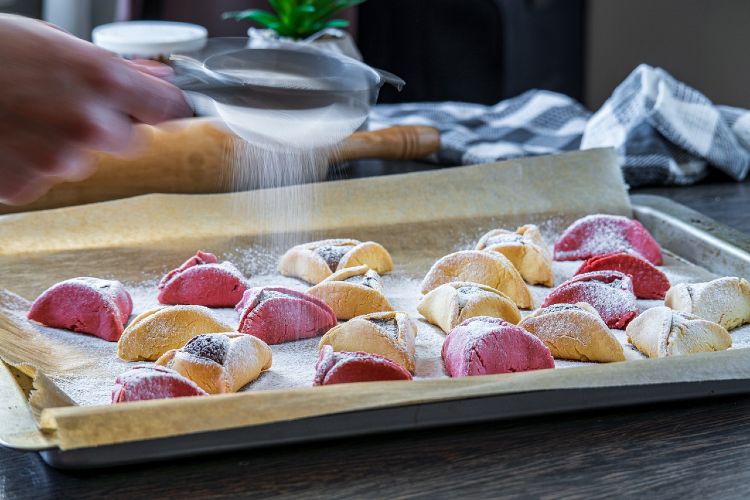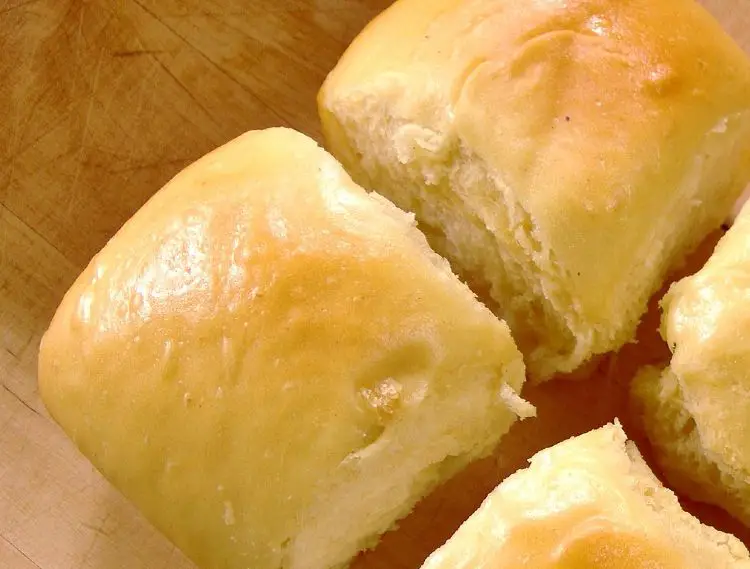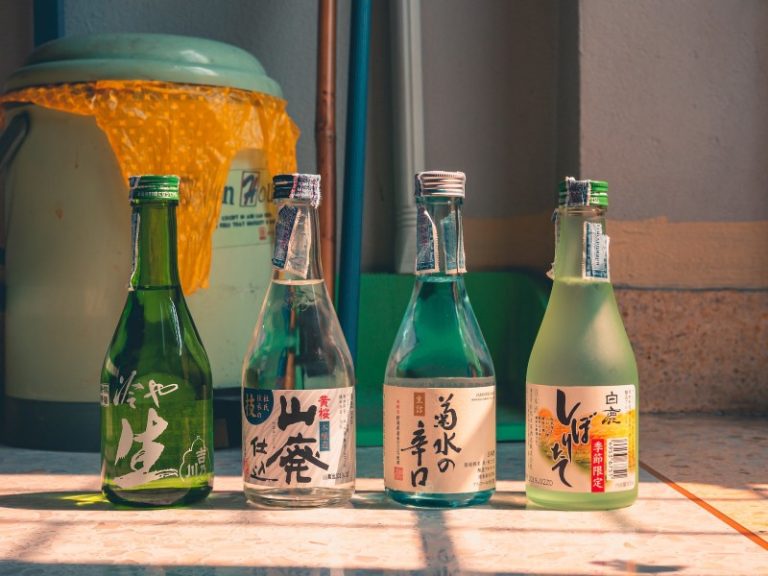What Does Japanese Curry Taste Like?
Quick Answer
Japanese curry has a unique, mildly spicy yet sweet and savory flavor profile. It’s generally milder than Indian or Thai curries, often incorporating elements like grated apples or honey for sweetness and soy sauce for umami. The dish usually has a thick, creamy consistency and features meat and vegetables, making it hearty and comforting. It’s commonly served over rice or as a sauce with fried meats like katsu.
What is Japanese Curry?
Japanese curry, known as “kare” in Japan, is a popular dish that is somewhat different from other Asian curries. It is typically a thick, stew-like dish featuring a variety of meats such as chicken, pork, or beef, and vegetables like potatoes, carrots, and onions.
The curry sauce is often made from a roux, which is a mixture of fat and flour, combined with spices and other flavorings like soy sauce. The end result is a curry that is less spicy but more sweet and savory compared to Indian or Thai curries, and it is commonly served over steamed rice or used as a sauce in dishes like katsu curry.
What Does Japanese Curry Taste Like?
Sweetness
In Japanese curry, sweetness plays an essential role in balancing the flavor profile. Ingredients such as grated apples, honey, or even sugar are often added to bring a nuanced sweetness to the dish. These sweet elements contrast beautifully with the savory components, creating a more rounded and complex flavor.
Contrast with Other Types of Curry
Unlike Indian or Thai curry, which leans more towards the spicy and aromatic side, Japanese curry includes these sweet elements to create a milder, more balanced dish. This touch of sweetness makes it distinct and more approachable for those who may be new to curry or prefer milder flavors.
Umami
Explanation of What “Umami” Is
Umami is often described as the “fifth taste,” joining sweet, salty, sour, and bitter. It is a complex flavor often described as meaty or savory, adding depth to a dish.
Ingredients Contributing to Umami Flavor
In Japanese curry, umami is often achieved through the use of ingredients like soy sauce, and sometimes dashi (a Japanese broth). These elements infuse the curry with a rich, deep flavor that elevates it from being merely a spiced stew to something far more complex and satisfying.
Mild Spiciness
Types of Spices Used
Common spices in Japanese curry include turmeric, cumin, and mild chili powders. While spices are used, the focus is on creating a harmonious blend rather than a fiery heat.
Comparison to Spiciness Levels in Other Curry Traditions
Japanese curry is generally milder than its Indian and Thai counterparts. Whereas Indian and Thai curries can be incredibly spicy, Japanese curry aims for a more balanced, mild heat that complements rather than overwhelms the other flavors.
Creaminess
Role of Roux and Other Thickening Agents
Japanese curry often employs a roux made of fat and flour to create its characteristic creamy, thick texture. This gives the curry a stew-like consistency that is hearty and satisfying.
Texture and Mouthfeel
The creaminess of the curry provides a luxurious mouthfeel, making each bite rich and comforting. This texture contrasts nicely with any included vegetables or meats, which add their own textural elements to the dish.
Savory Elements
How Meats and Vegetables Contribute to a Hearty, Savory Taste
Meats like chicken, pork, or beef, and vegetables like potatoes, carrots, and onions are often featured in Japanese curry. These ingredients contribute to the dish’s hearty, savory characteristics, making it a filling and satisfying meal.
Harmony and Complexity
Balancing of Flavors
One of the most compelling aspects of Japanese curry is the balance of flavors. Sweet, savory, umami, and mild spiciness come together in harmony, making for a complex but not overwhelming flavor profile.
Complexity Without Overpowering Spiciness
The complexity in Japanese curry comes from the layering of different tastes and textures rather than an aggressive heat. This makes it a unique and fascinating dish that appeals to a wide range of palates.
FAQs
What Does Japanese Curry Taste Like?
Japanese curry has a unique blend of flavors that can be described as sweet, savory, and mildly spicy. It’s less intense than Indian or Thai curry, but it offers a complexity through a harmonious blend of umami, sweetness, and a touch of heat.
Is Japanese Curry Spicy?
Generally, Japanese curry is milder than other Asian curries. While it does contain spices like turmeric and cumin, the focus is on a balanced flavor rather than intense heat. However, you can find spicier versions or even add extra spice to suit your taste.
What Gives Japanese Curry Its Sweetness?
Japanese curry often incorporates elements like grated apples, honey, or sugar to add a nuanced sweetness. This sweetness contrasts with the savory and umami flavors, creating a well-rounded taste.
Why Does Japanese Curry Have A Creamy Texture?
The creamy texture often comes from the use of a roux, which is a mixture of fat and flour. This thickening agent gives the curry a stew-like consistency, making it hearty and satisfying.
What Types Of Meats Are Commonly Used In Japanese Curry?
Japanese curry commonly features chicken, pork, or beef. The meat adds a hearty, savory element that complements the complexity of the curry.
How Does Japanese Curry Differ From Indian Or Thai Curry?
Japanese curry is generally milder, sweeter, and less spicy than Indian or Thai curries. It also has a thicker, stew-like consistency due to the use of a roux. The focus is on a harmonious blend of flavors rather than the intense spiciness found in other Asian curries.
Can I Make Vegetarian Japanese Curry?
Absolutely. You can substitute the meat with tofu or additional vegetables like mushrooms, cauliflower, or bell peppers to make a satisfying vegetarian version.
What Beverages Pair Well With Japanese Curry?
Light beers, white wines, or even simple iced teas can complement the flavors of Japanese curry without overwhelming them.
Does Japanese Curry Taste Like Thai Curry?
Japanese and Thai curries have distinct flavor profiles that make them unique culinary experiences.
Thai curry often uses ingredients like coconut milk, lemongrass, galangal, and a variety of chilies, resulting in a spicier and more aromatic dish.
Japanese curry, on the other hand, is milder, sweeter, and thicker, with flavors of umami coming from ingredients like soy sauce. While both are delicious, they offer different sensations on the palate, making them far from interchangeable.
Why Does Japanese Curry Taste So Different?
The unique taste of Japanese curry arises from its specific blend of flavors and the types of ingredients used.
First, it often includes elements like grated apples or honey to add a touch of sweetness, which is generally not found in other types of curry.
Second, it frequently employs a roux as a thickening agent, giving the dish a creamy, stew-like consistency.
Lastly, the spice level is usually milder, focusing on a harmonious balance of sweet, savory, and umami flavors rather than intense heat.
What Does Japanese Katsu Curry Taste Like?
Japanese Katsu Curry is a delightful combination of crispy, breaded meat cutlets (usually pork or chicken) served with Japanese curry and rice. The katsu adds a crunchy texture and a meaty richness to the dish.
When combined with the sweet and savory curry sauce, you get a complex interplay of flavors and textures: the crunchiness of the katsu, the creaminess of the curry, and the softness of the rice. It’s a satisfying dish that offers a unique take on traditional Japanese curry.
What Tastes Best With Japanese Curry?
Japanese curry pairs wonderfully with a variety of accompaniments. Steamed white rice is the most common side, acting as a neutral base that complements the rich curry flavors. Pickled vegetables, like Japanese pickled radish (daikon), can add a refreshing contrast.





